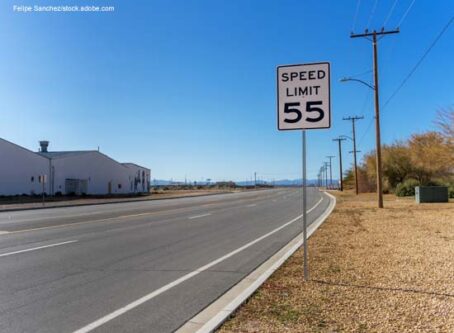Pennsylvania revises ‘Steer Clear’ law
A revised rule in Pennsylvania is intended to improve safety on the state’s roadways via the “Steer Clear” law.
Since 2001, Pennsylvania statute requires all drivers to slow down and to move into a lane not adjacent to an emergency response area anytime an emergency vehicle has its lights flashing and where road crews or emergency personnel have lighted flares, posted signs or try to warn travelers. The maneuver is required when possible.
If motorists are unable to move over because of traffic or other conditions, the rule states they must reduce their speed.
Offenders face fines up to $250. Repeat offenders face double fines. Subsequent offenses would result in $1,000 fines.
In addition, a 90-day license suspension is included for third or subsequent offenses. The license suspension is also applied to any incident that results in serious bodily injury to or death of another person.
Continuing problem
Sen. Doug Mastriano, R-Adams County, has said that revisions are needed to the Steer Clear law due to an increased number of incidents.
The Pennsylvania State Police reports there were 7,075 citations issued under the law during the most recent two-year period. An additional 3,204 warnings were issued during that time.
Mastriano added that nationwide there have been 40 first responders killed this year in work zones.
“We have a problem in Pennsylvania and it needs to end,” Mastriano said during a previous news conference.
Rule changes
Gov. Tom Wolf has signed into law Mastriano’s bill to revamp the Steer Clear law. The Pennsylvania House and Senate recently approved the bill, SB1281, by unanimous consent.
The revised law is intended to clarify how travelers should react when approaching or passing an emergency response area. Specifically, drivers approaching an emergency response area who are unable to safely merge into a lane further away from the affected area would be required to travel at a speed at least 20 mph less than the posted limit.
Existing law only required a driver to pass the affected area at a “careful and prudent reduced speed.”
Other changes include setting a new point system and increasing fine amounts.
The new point system would result in two points for failure to move over in an emergency response area. Additionally, fines would be doubled for a summary offense: $500 for first-time offenders; $1,000 for a second offense and $2,000 for a third offense.
“The new point system will increase the pain,” Mastriano said. “If you don’t move the heck over, you are going to have some severe consequences on your license.”
The new rules take effect on April 27.
More changes coming?
A related bill is in the Pennsylvania Senate.
Sponsored by Sen. Pam Iovino, D-Mt. Lebanon, would apply the Steer Clear rule to any disabled vehicle that “adequately displays” at least two of three safety markings. Qualified markings are blinkers, road flares, and/or caution signs.
“Drivers would be required to pass these disabled vehicles in the same manner as they are required to pass emergency service areas,” Iovino wrote in a memo to legislators.
She adds that the legislation would put violations and penalties for failing to safely pass disabled vehicles on par with those associated with failing to safely pass vehicles covered in statute.
SB1345 is in the Senate Transportation Committee. LL









